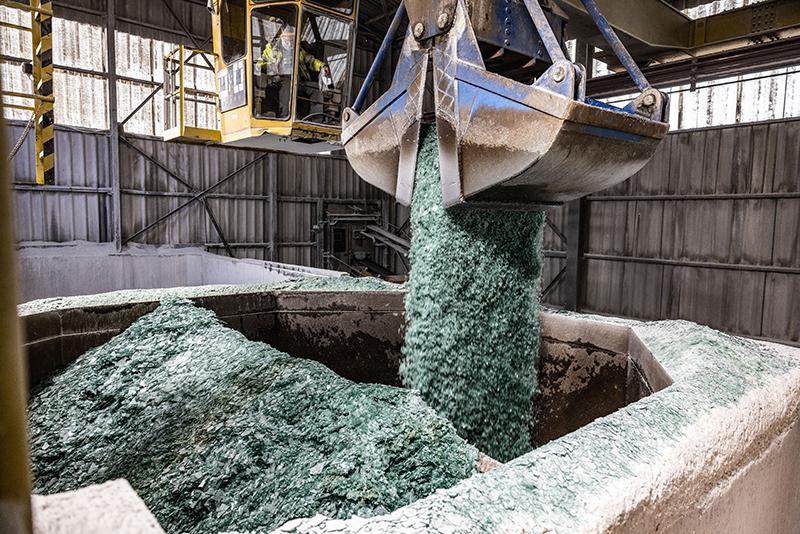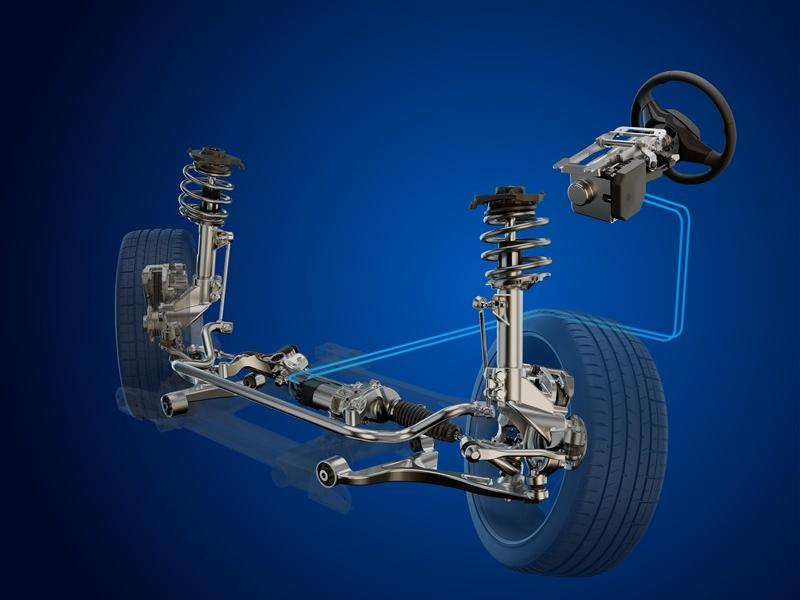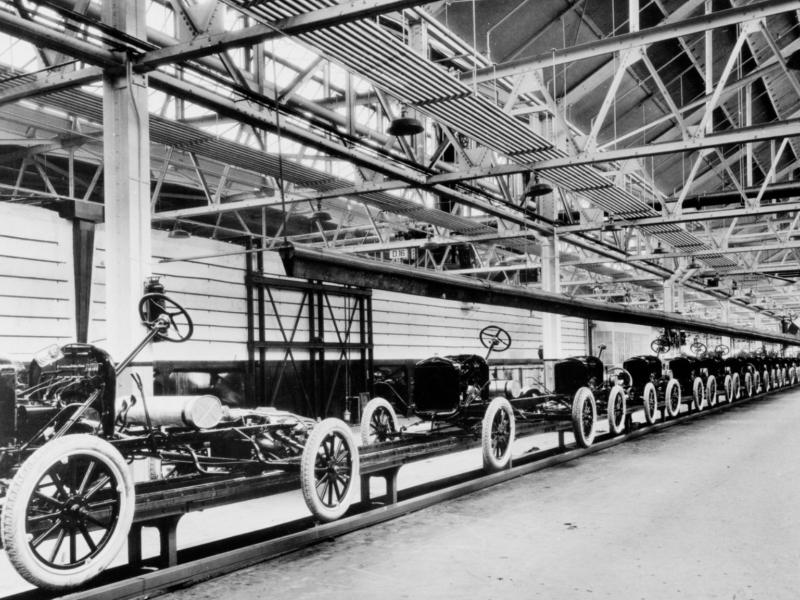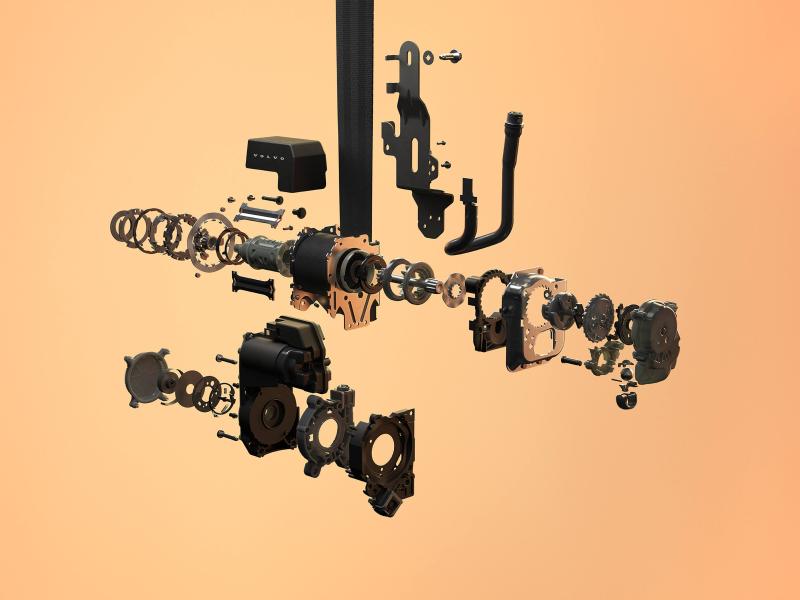Together with its partner companies, Audi is taking up the challenge of establishing a closed material cycle for car glass with this pilot project. The plan is part of Audi’s circular economy strategy. To the greatest extent possible, the raw materials that are involved are to be reintroduced into the production process once they are no longer being used. That way, resources can be conserved in development and manufacturing and the environmental effects can be reduced throughout the entire value chain. Aluminium scraps from Audi’s press shop have been introduced into a similar closed circuit since 2017. With glass, another material circuit will now be closed. “We’re working on introducing materials we have direct access to into closed circuits,” says Marco Philippi, Head of Procurement Strategy. “As of now, for example, old car glazing is not being used to produce new car windows. We want to change that.”
Recycling damaged glass means that less energy and raw material have to be used overall – using processed materials ultimately makes it possible to reduce the demand for primary materials like quartz sand. Audi intends to use car windows produced this way in Audi Q4 e-tron series production. The company is banking on its collaboration with supplier companies to develop new material circuits and make the value chain more sustainable. There is enough potential in it: at present, a large portion of discarded car windows or panoramic sunroofs are turned into beverage bottles or insulation materials, for example. If this project succeeds in turning damaged car windows back into new windowpanes, there will be several benefits: the quality of high-grade car glass will be preserved. There is also another positive effect on carbon emissions. Recycling emits up to 30 percent less carbon dioxide compared with manufacturing new glass.
The first step: Reiling processes car glass and homogeneously separates its components
The glass recycling pilot project starts with selected dealerships in the Volkswagen Group’s retail network. Customers whose cars have a damaged window set up appointments there. The retail partner checks to see if the window can be repaired. If it cannot, the window is replaced. The broken pane is delivered to Volkswagen’s Original Teile Logistik GmbH & Co. KG.
In the next step, the damaged windowpanes are delivered to Reiling Glas Recycling. There, they are first broken up into small pieces and processed. In the process, Reiling puts the old car glazing back into plate glass production for the first time.
“Until now, the recycled material has mostly been turned into beverage bottles,” explains Daniel Rottwinkel, Plant Manager at Reiling Glas Recycling. “Car glass has to meet the most stringent requirements, for example with respect to crash safety. Those demands don’t apply to bottles.” In the past, post-consumer glass from cars has not been used in plate glass production, but rather for different purposes with less rigorous requirements.
In order to be able to produce high-quality recyclable material from this used laminated glass, Reiling Glas Recycling uses modern, powerful equipment. The company sorts out non-glass materials like PVB (polyvinyl butyral) plastic layers in the glass, window edgings, metals, and wires, such as heating filament and antenna cables. The elimination process is carried out using magnets, non-ferrous metal separators, extraction units, and electro-optical sorting units. In the future, such PVB layers are also meant to be introduced into a vehicle circuit.
The second step: Saint-Gobain Glass turns the shards into new base glass and Saint-Gobain Sekurit makes that into auto glazing.
In the next recycling step after the glass recyclate has been processed and all possible waste materials have been removed, Saint-Gobain Glass turns it into plate glass in Herzogenrath, Germany. To do that, the glass granulate is initially segregated by type for clear verification of source and colour and then stored in bins. Producing new base glass requires the purest, most homogeneous glass recyclate possible. Saint-Gobain Glass then mixes the recyclate with, among other things, quartz sand, sodium carbonate, and chalk – the basic components of glass. At the moment, the proportion of recylate to other materials varies between 30 and 50 percent.
The target for the pilot project with Audi is about 40 tons of recycled car glass. “For us, this cycle of making new car windows out of old ones is an important step toward producing automotive glass in a way that conserves resources and energy,” says Dr Markus Obdenbusch, production manager in charge of the Saint-Gobain float at the Herzogenrath site. “We’re just starting to look at glass as a recyclate, so we anticipate that there will be more potential for improvement.”
The plate glass is first processed into rectangles of about 3 x 6 metres (10 x 20 feet) each. After that, the affiliated company Saint-Gobain Sekurit produces automotive glass through an additional process.
The third step: The resulting automotive glass will be used for the Audi Q4 e-tron seriesThe three partner companies have decided to put the process to an initial one-year test so that they can learn about material quality, stability, and costs. If glass can be recycled in an economical and an ecologically meaningful way, car windows made from secondary materials will be used in the Audi Q4 e-tron series.
From faulty glass to new windows
From faulty glass to new windows
OEM
Tuesday, 31 May 2022






